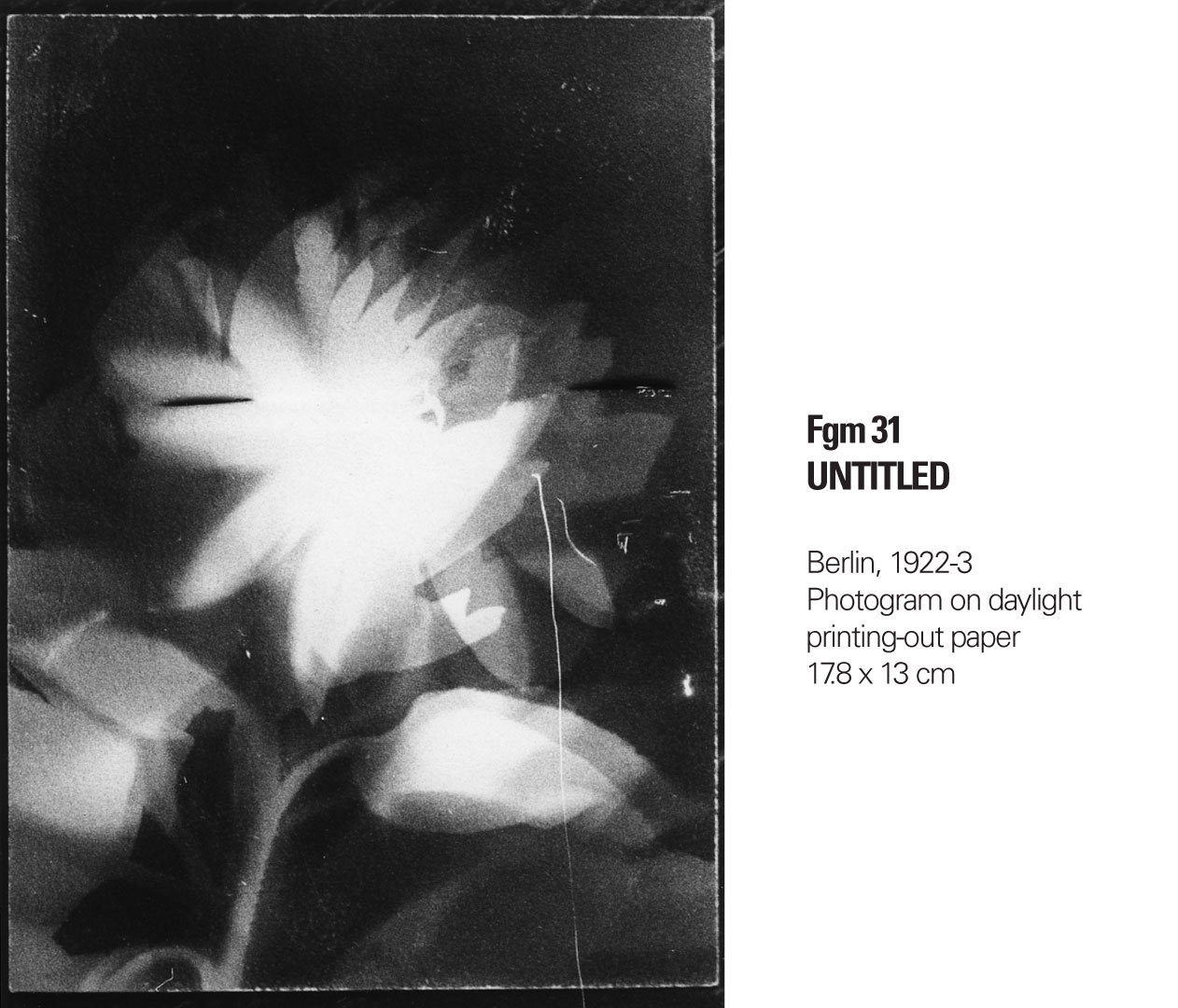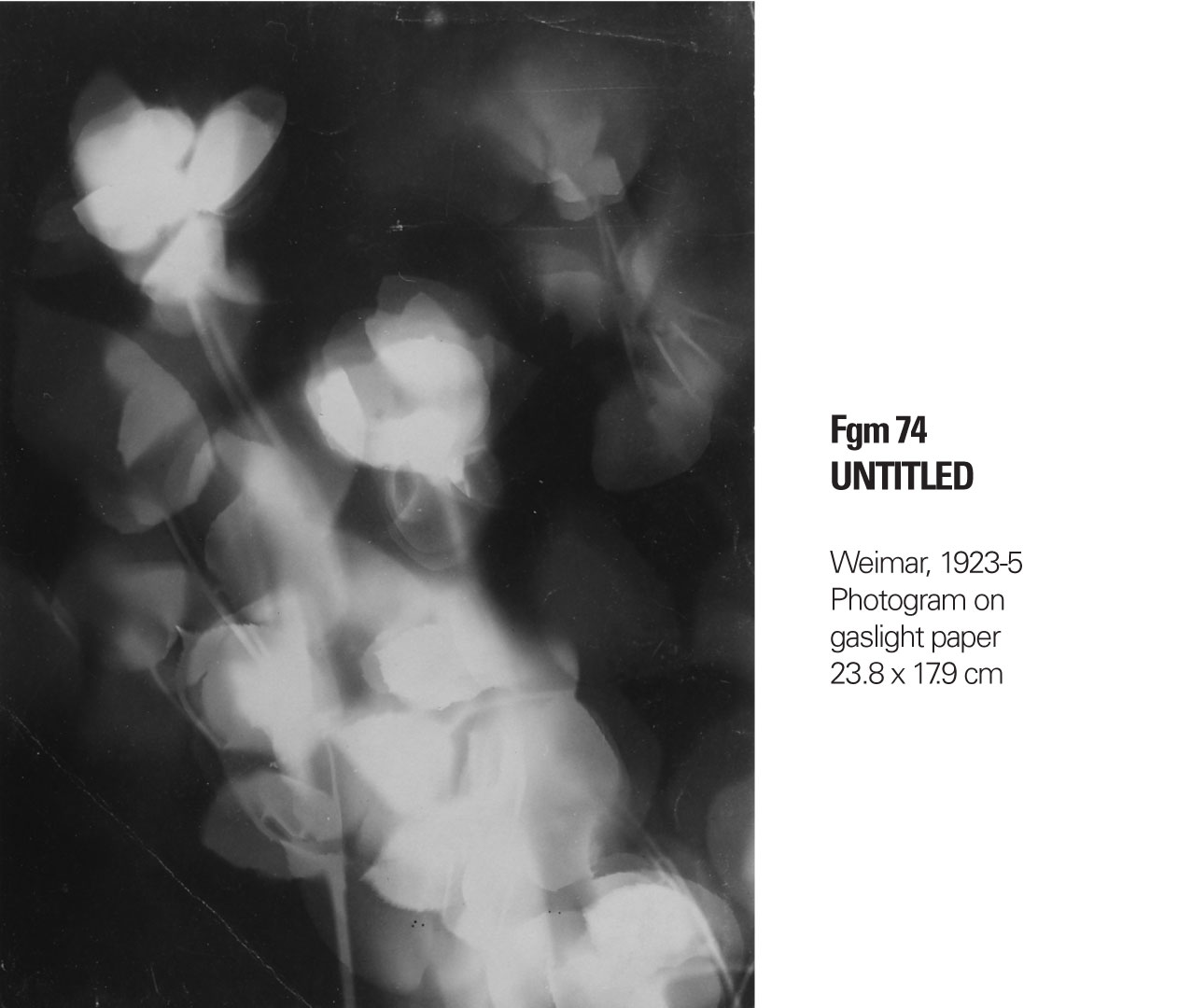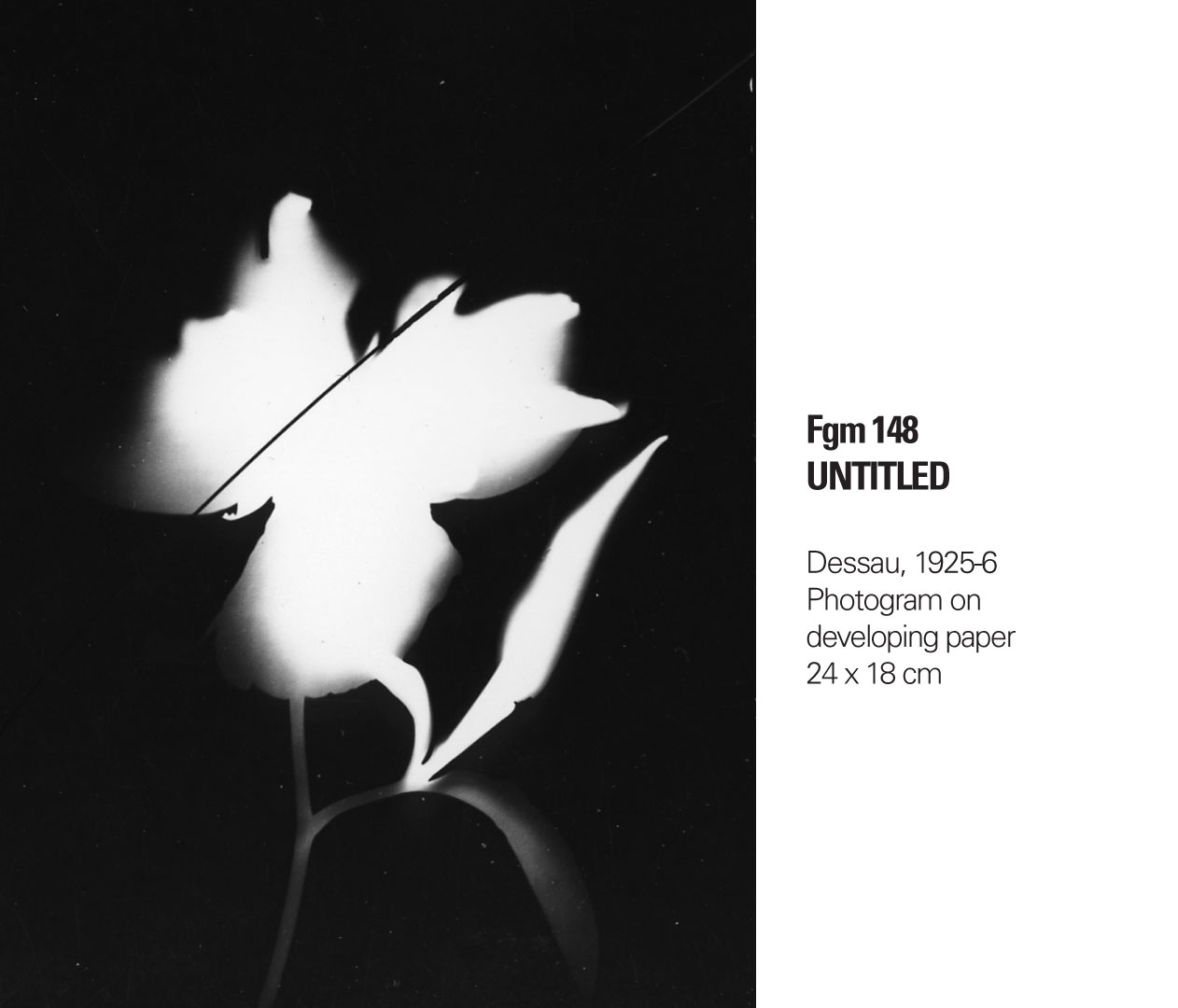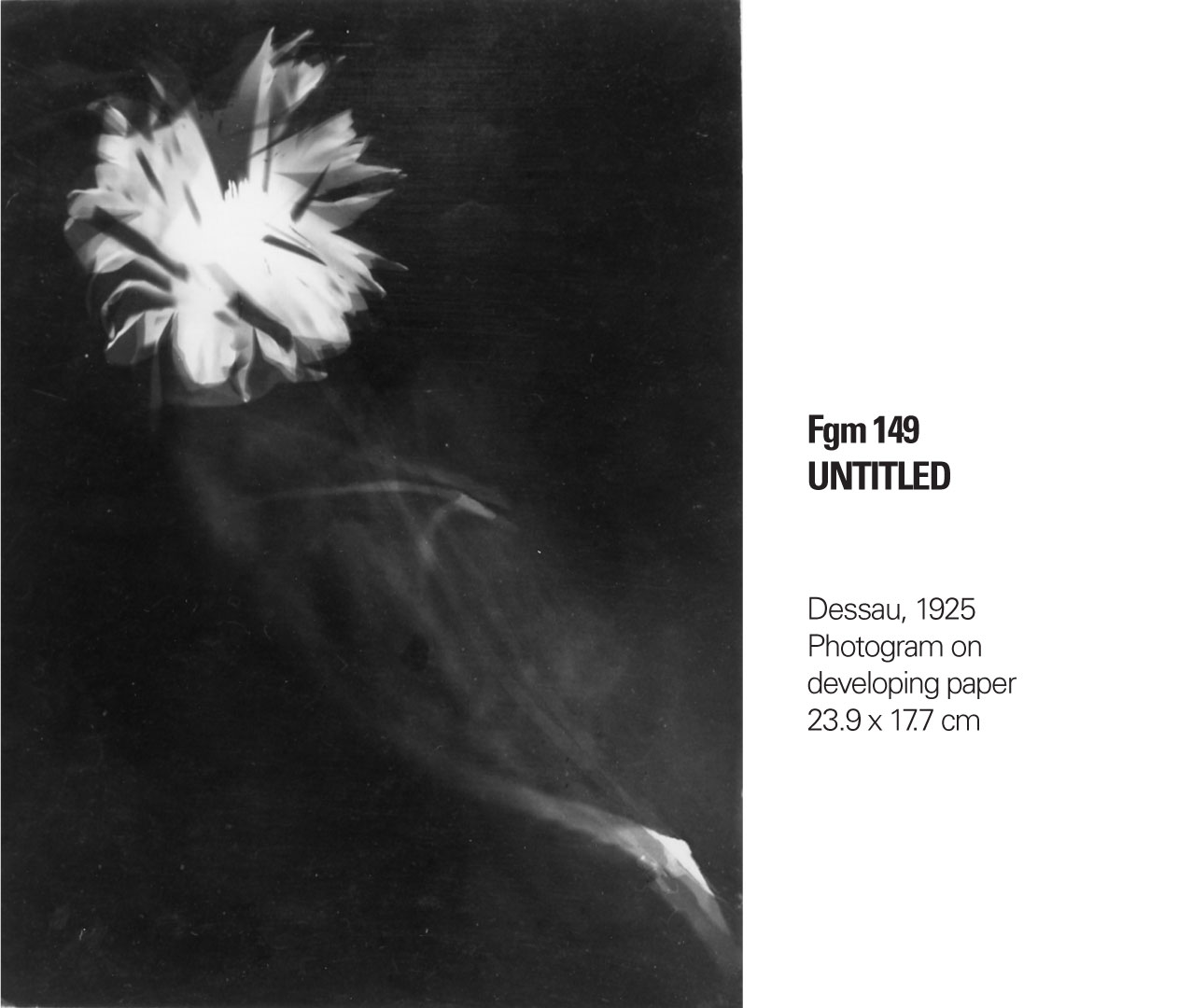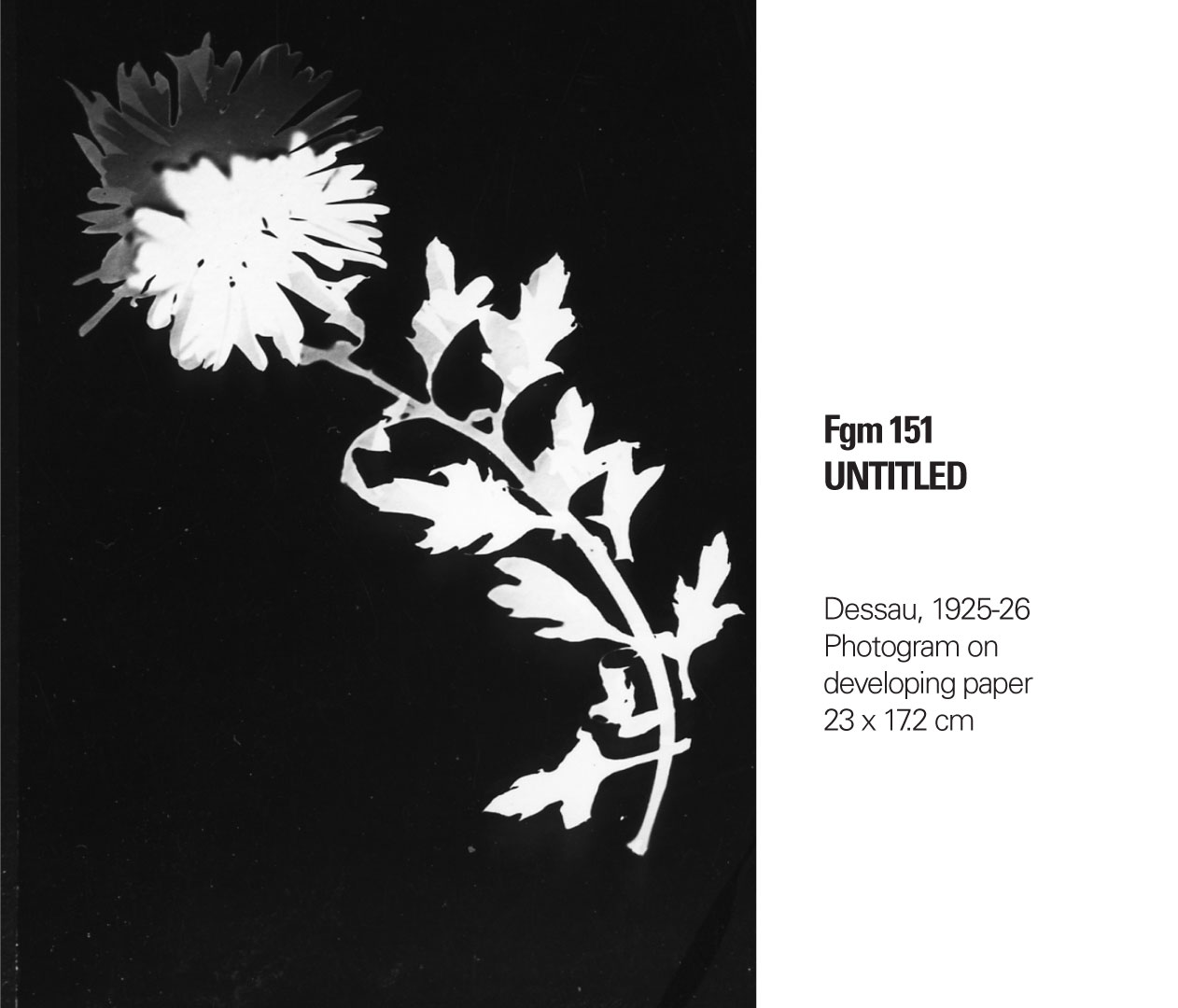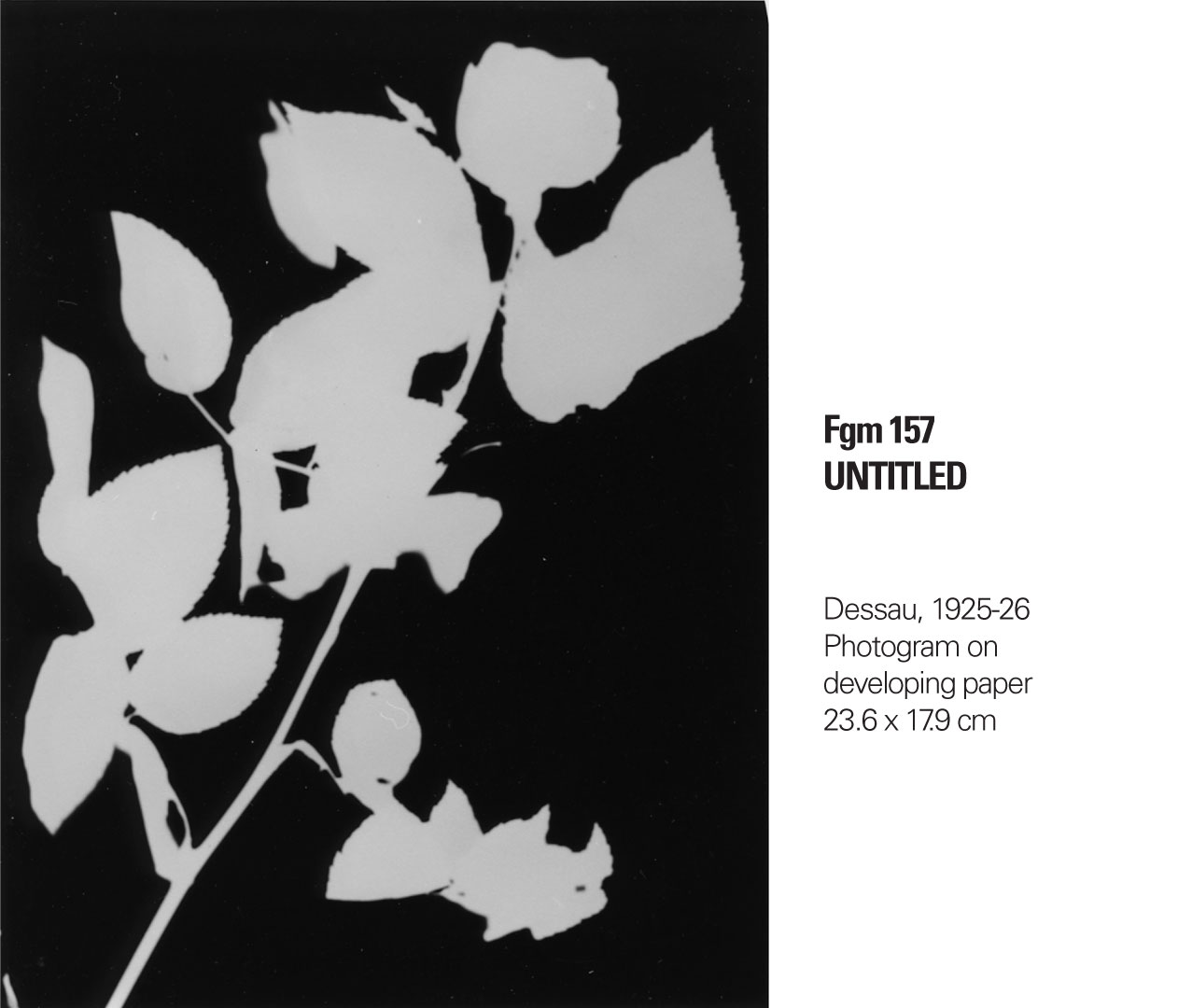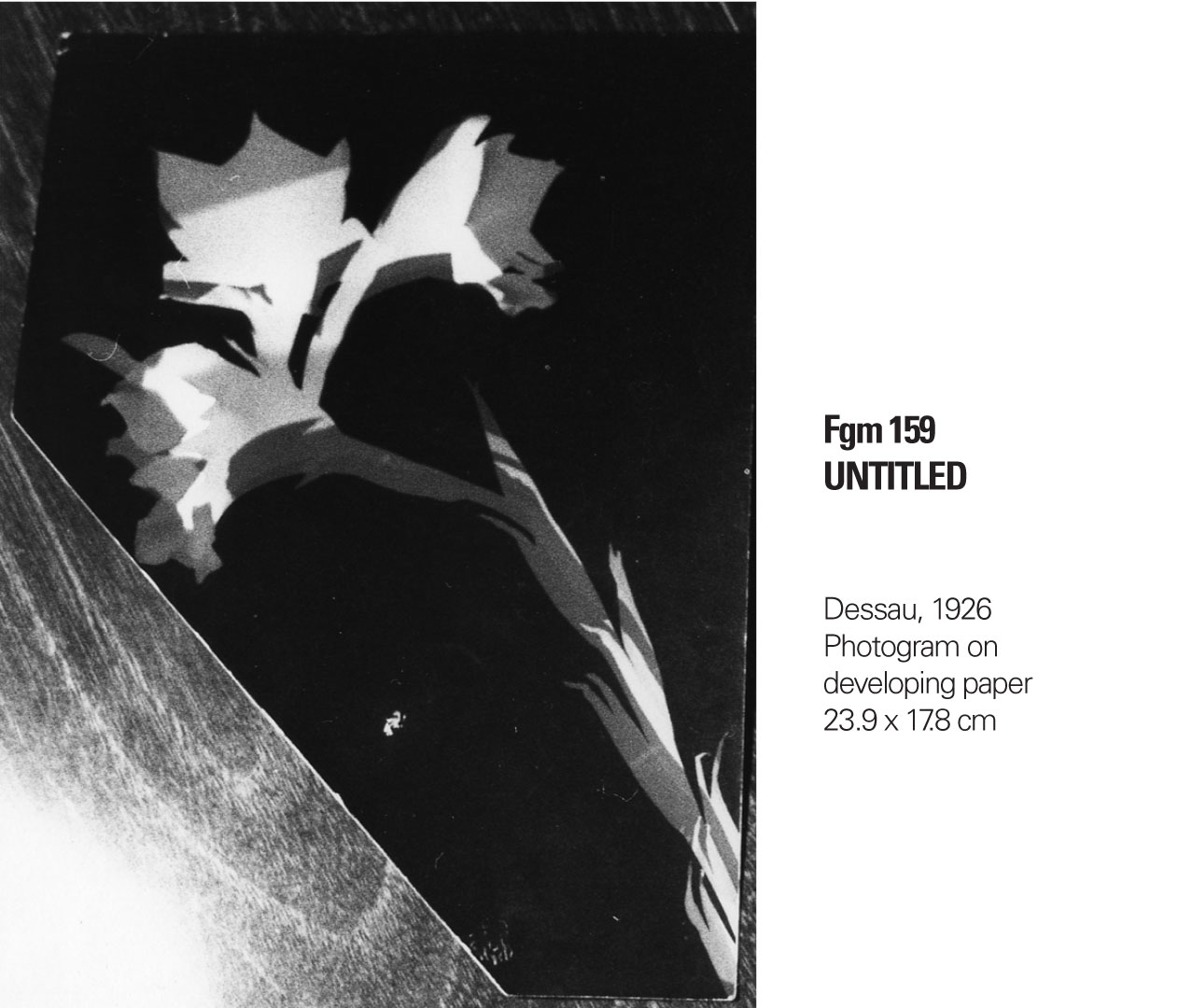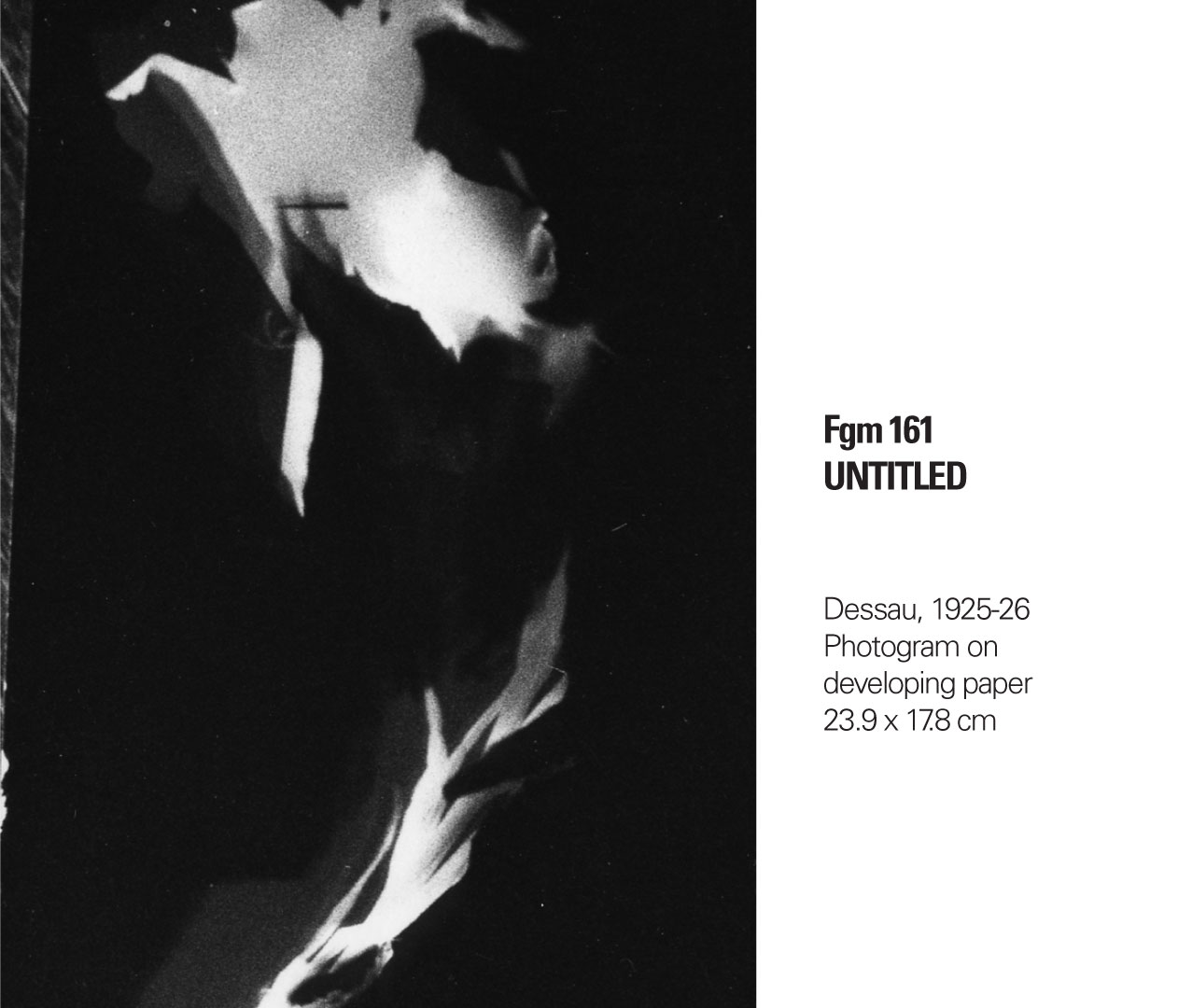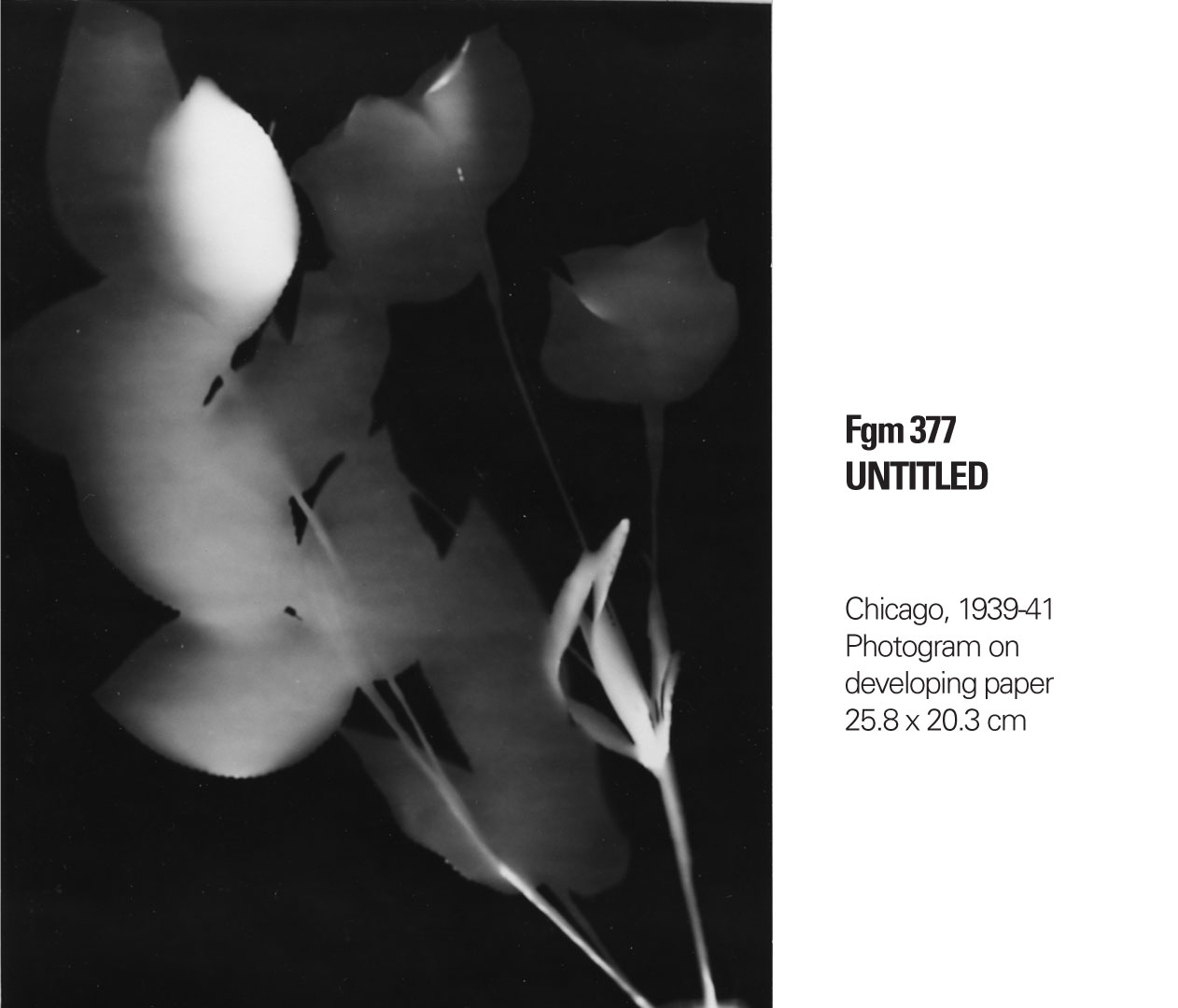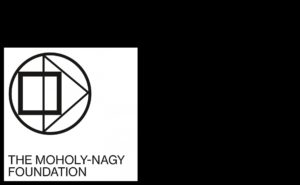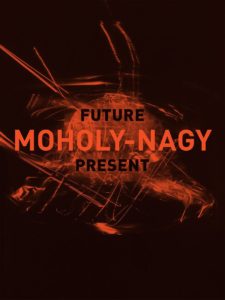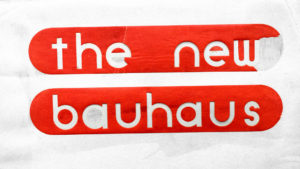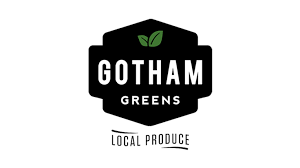László Moholy-Nagy
1895, Borsód, Hungary – 1946, Chicago, IL
...the flower can be understood as the material starting point in a path toward abstraction and inquiries into the nature of light and processes of production and reproduction...
– Robin Schuldenfrei
City / Nature / Society: Moholy-Nagy’s Flower Photograms
László Moholy-Nagy was transfixed by the modern city. In his peregrinations from his rural beginnings, to 1910s Budapest and Vienna, to Berlin (1920s), to London (early 1930s), and finally to Chicago (1937-1946), his art always enlisted the metropolis: its forms, materials, energy, and in particular, its light. Light was a means of engagement into the modern for Moholy—for a time he sought to give up painting in order to “paint with light.” Photograms, registered only by means of light, particularly represented this quest. For them, he selected objects that he then rendered into abstractions in black, white and grays. The fragmented urban experience, as well as its materials and objects, gave form to his abstract art. Why then, did Moholy make flower photograms, representative of the natural world, a subject he did not otherwise substantially engage in? In contradistinction to his other photograms, the flower works are less abstract and their origins are clear in subject and object. Notably, the flower photograms span the entirety of his career, begun in Berlin, before his call to the Bauhaus, they continue to his time at the Bauhaus in both Weimar and Dessau, back to Berlin, in London, and finally throughout his time in Chicago, culminating in photograms of a ear of wheat and of roses.
Moholy’s flower photograms thus represent a unique place in his oeuvre. Crucially, beyond the flower photograms, there are few other representations of nature in Moholy’s artwork. Deceptively simple, they are amongst the most recognizable of the objects he set on paper, exposed to light, and fixed, resulting in an image of a ethereal plant glowing on a darkened background. Moholy’s other photograms tend to belie their origins in common household objects, trinkets, gear wheels, pieces of glass or fragments of paper; those resulting images in his photogram oeuvre celebrate geometrical forms—circles, quadrilaterals, and spirals—representing an abstract output which closely aligns with his photography, painting, sculpture, set designs, and pedagogical practices. This body of work was engaged in the abstract experience of the modern metropolis—epitomized by shifting shapes, overlapping planes, representations of modern materials—and with abstraction in modernism more generally. The flower photograms are materially ephemeral: a single take creates a unique print, conjured by light and shadow, while the bloom, having been plucked and once captured by the photogram process, is destined to wilt and die. And the larger ephemerality of natural world itself—ever fleeting, whether represented by diurnal time, location, weather or season—is seemingly embodied in the abstraction of these photograms.
Moholy began making his first photograms in Berlin, following a trip in the summer of 1922 with his first wife Lucia Moholy to the Rhön mountains of Germany. During this sojourn of several weeks spent in a farmhouse near the Loheland community (a group centered on natural living, healthful and artistic activities) the couple immersed themselves in the natural landscape and in the activities of their fellow community members. They were also engaged in intense discussions on the topic of production and reproduction which would result, upon their return to Berlin that fall, on both a body of photograms produced by Moholy, and the authoring of the canonical article, “Production-Reproduction,” published in De Stijl in 1922. In Loheland, Moholy learned the technique of flower photograms from a community member, Bertha Günther. Like Günther, Moholy’s earliest Berlin photograms are made with daylight printing-out paper, a process by which a treated piece of paper is exposed to the sun and fixed using a water bath. However, he quickly switched to darkroom photogram production, using the light from the enlarger to expose the flower and then fix the resulting image in chemicals, allowing him greater control over the process. Günther’s photograms are artfully arranged, but static, decorative compositions featuring previously dried and pressed blooms in which the beauty and structure of the flower is the main subject matter.
In Moholy’s, the flower can be understood as the material starting point in a path toward abstraction and inquiries into the nature of light and processes of production and reproduction that he was theorizing and working through artistically in this period.
As with his other photograms, in the flower artworks Moholy is less interested in the originary object, which is rendered flat, nor in its materiality, but in the effects of light represented in the gradations of the tones, and in ideas of production as related to notions of reproduction. In removing the camera and film from the photographic procedure, the photogram is one step closer to Moholy’s ideas as expressed in the “Production-Reproduction” essay, in which the reproductive process itself becomes a productive element in the artwork. A result of the direct impact of an object on light-sensitive paper, without intermediary intervention, the resulting photogram as artwork was critical to Moholy’s thinking on how the means of artistic production could be reined into that process—and also embodied in—the resulting artwork.
For Moholy, the photograms were primarily works of art but he also experimented with their potential use in advertising, for the camera manufacturer Goerz, and for Jena Glass, as well as other commercial and publishing uses, such as a cover for Broom magazine. Curiously, as far as we know, Moholy never publically exhibited the flower photograms, nor are they to be found, except in a few instances, among the many illustrations in his prodigious publishing output, where the other photograms were often showcased. He later incorporated photogram exercises, including flower photograms, into his curriculum at the New Bauhaus in Chicago and its later iteration, the Institute of Design. However, although he produced them throughout the entire span of his career, the flower photograms seemingly had no public artistic or commercial value to Moholy, but rather represent a quiet respite from—while still directly related to—his teaching and city activities.
Because they are captured from living plants, the flower photograms have a vibrancy vacant in Moholy’s other photograms. They also display a fragility, their petals and stems delicately rendered as they glimmer out of the darkness. The earliest versions seem to both glow and fade, to recede before our very eyes. In the thrilling urban experience, represented in vast scales, rapid pace, abstract relations and forms, the flower photograms are reminders of the importance of not losing touch with an earthly basis, quiet renderings that connect people to nature, no less relevant today in our contemporary age than in burgeoning 1920s Berlin. Each flower photogram is a unique moment in its time and place—nature is stilled when affixed, through gradations of light, in the photograms. Through them, nature is constituted, and then abstracted. So too, in Artes in Horto, which re-animates these photograms, and thus the city, with luminous nature.
Robin Schuldenfrei
The Courtauld Institute of Art
University of London
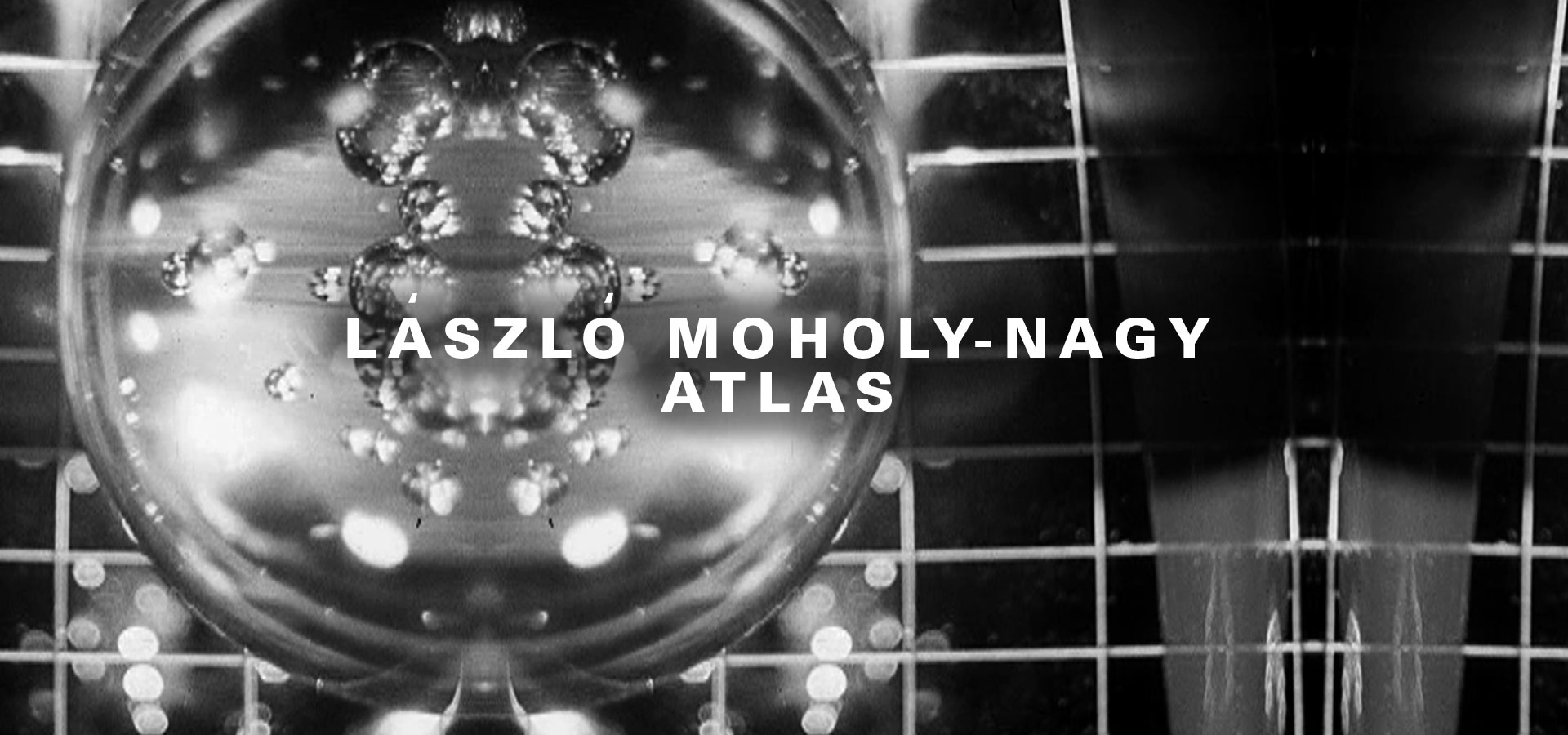
Chrysanthemus
Botanical Name: Chrysanthemums
Common Name: Mums
Family: Asteraceae
Native Range: East Asia and the center of diversity is in China.
Rugosa Rose
Botanical Name: Rosa Rugosa
Common name: Rugosa Rose
Family: Rosaceae
Native Range: Eastern Russia, Korea, Japan, Northern China
Gladiola
Botanical Name: Gladiolus
Common name: Sword Lily
Family: Iridaceae
Native Range: Sub-Saharan Africa, mostly South Africa
